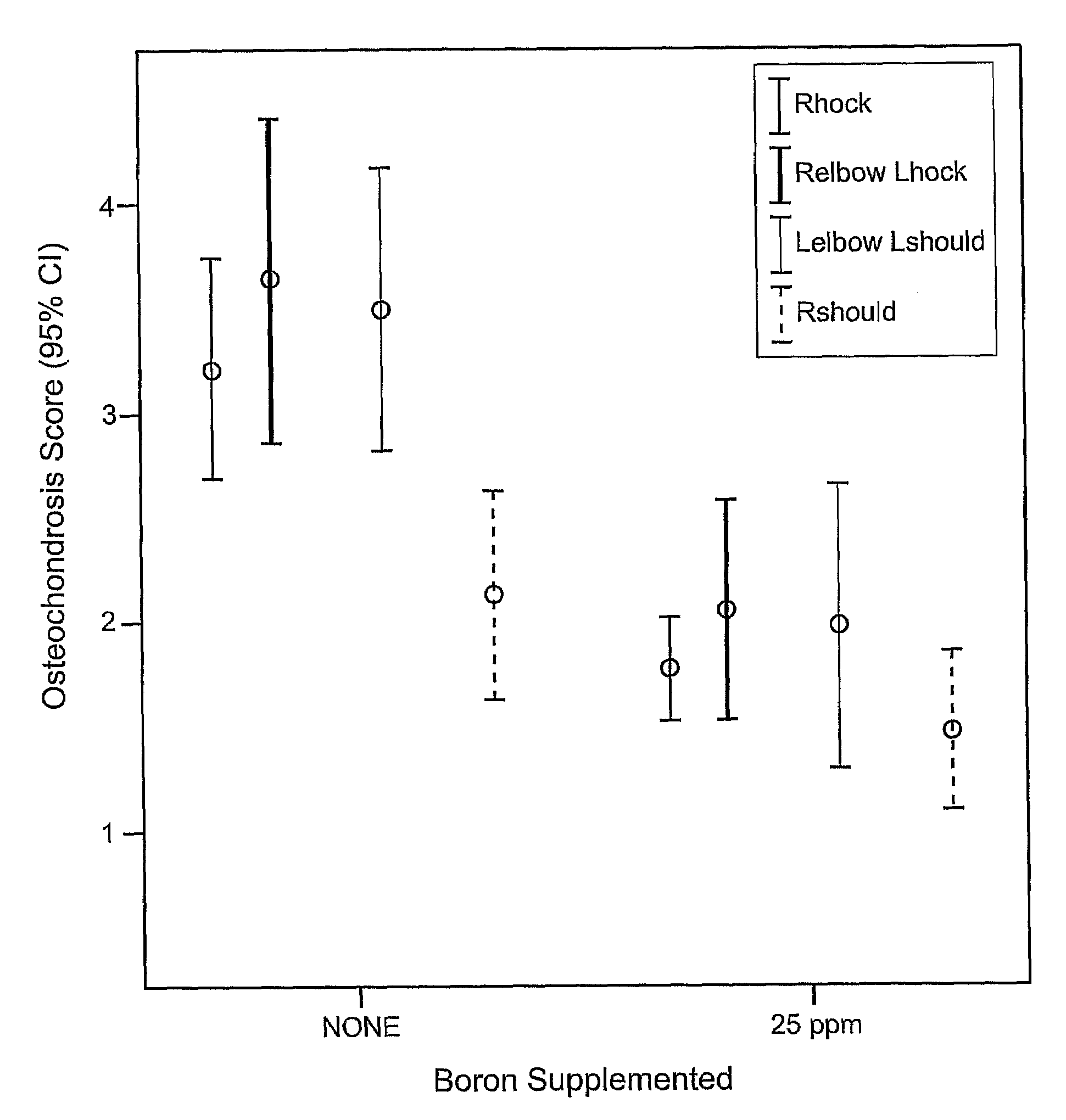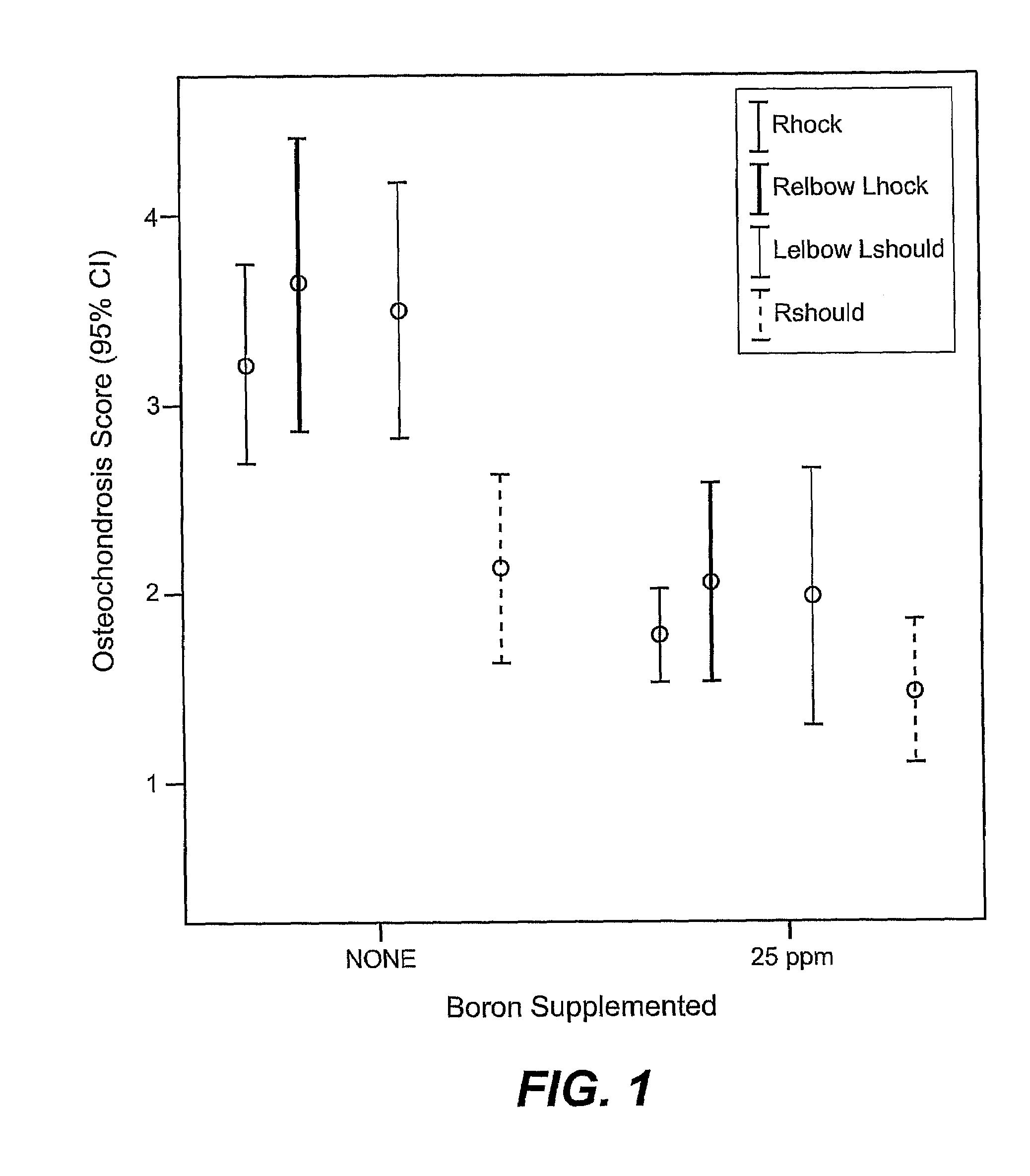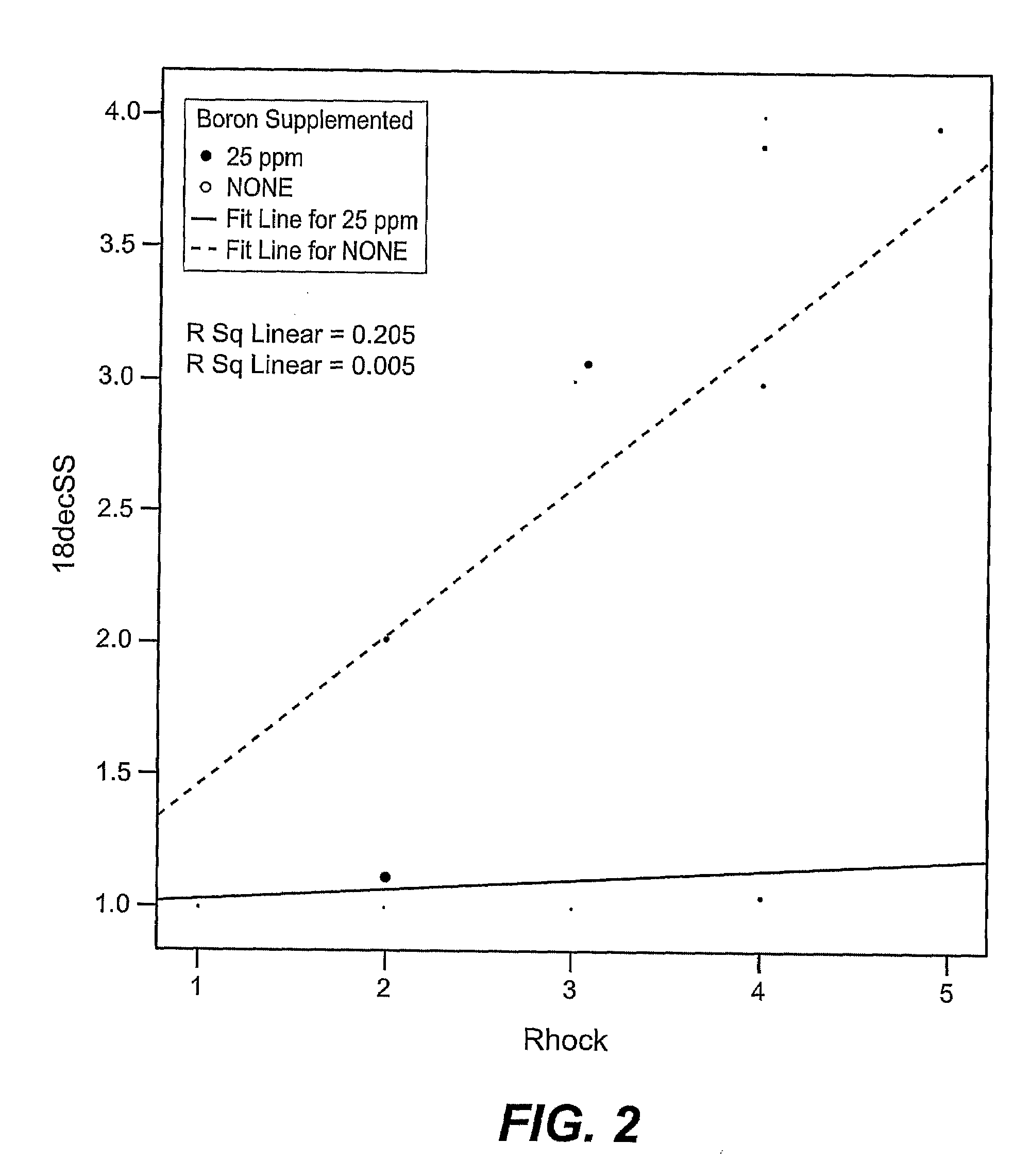Prevention and treatment of osteochondrosis in animals and humans
a technology for osteochondrosis and animals, applied in the field of prevention and treatment of osteochondrosis in animals and humans, can solve the problems of affecting normal skeletal function, culling and death, and economic losses potentially exceeding $200 million, so as to improve the reproductive rate of animals, reduce the amount of pre-weaning mortality, and increase the rate of return
- Summary
- Abstract
- Description
- Claims
- Application Information
AI Technical Summary
Benefits of technology
Problems solved by technology
Method used
Image
Examples
example 1
Boron Supplementation and its Effects on OC-Associated Lameness in Swine
Materials and Methods
[0076]Three groups of 19 pigs, Duroc and Yorkshire pigs were randomly blocked by breed, litter and weight. The basal diet consisted of commercial corn-soy diet containing 10 ppm boron.
[0077]Test diet group B was fed a basal diet plus 25 mg / kg boron as sodium borate decahydrate (borax). Test diet group A was fed a basal diet plus 25 mg / kg boron as sodium borate decahydrate (borax) and 250 mg / kg ascorbic acid.
[0078]Pigs were weighed at the beginning of the study, 4 weeks later and every 3 weeks until the end of the study. Animals were scored for soundness on a 5-point scale at each weighing. (Five-point scale: 1=no soundness defects; 2=minor soundness issues but still sound enough for retention as breeding animal; 3=not sound enough for retention for breeding but still marketable; 4=unsound, likely to be rejected at slaughter; 5=severely lame, requiring euthanasia for humane reasons.) Grading ...
example 2
Reproductive Effects in Female Swine
[0091]It was observed that when sows were fed diets containing 50 ppm supplemental boron during the late gestation and early lactation period, piglet quality as assessed by uniformity, growth, and general thrift was improved, and pre-weaning piglet mortality was reduced. A preliminary pilot study confirmed these observations. Sows were fed a standard corn-soy diet. Half of the sows received an oral administration of a boron supplement to provide 1 mg boron per kg body weight. The other half did not receive any supplementation. Preliminary analysis of the data from the first 600 pigs indicated that the provision of boron to the gestating and lactating sows reduced pre-weaning mortality from 23% to 16% and increased piglet weight at 12 days of age from 8.0 pounds to 8.5 pounds, as compared to the non-supplemented groups.
[0092]To test the effect of boron on sows and their litters, a trial was established in a large commercial swine operation during a...
example 3
Effects of Boron on Phosphorus Digestibility and Excretion and Feed Conversion
[0095]A 28-day feeding trial was conducted in a large commercial farm setting with 144 crossbred pigs of initial body weight of 24 kg. Pigs were randomly allocated to 24 pens of 6 pigs per pen in a thermoneutral controlled environment barn with steel grid flooring. Each pen was equipped with a single-hole feeder. Water was available free-choice from a nipple drinker. Pigs were fed a commercial pig diet containing 0.5% phosphorus plus 0 or 50 mg / kg Boron and a calcium level of either 0.5 or 0.65% in a 2×2 factorial design. Feces were collected on the last 3 days of the study from each pen and a pooled aliquot was dried and submitted for chemical analysis. Yttrium oxide was added to the diet at 0.05% and served as a marker for phosphorus digestibility. Pig growth and feed consumption was measured at the end of the study with the pen as the experimental unit. Data was analyzed for effects of boron and calcium...
PUM
| Property | Measurement | Unit |
|---|---|---|
| pH | aaaaa | aaaaa |
| body weight | aaaaa | aaaaa |
| weight | aaaaa | aaaaa |
Abstract
Description
Claims
Application Information
 Login to View More
Login to View More - R&D
- Intellectual Property
- Life Sciences
- Materials
- Tech Scout
- Unparalleled Data Quality
- Higher Quality Content
- 60% Fewer Hallucinations
Browse by: Latest US Patents, China's latest patents, Technical Efficacy Thesaurus, Application Domain, Technology Topic, Popular Technical Reports.
© 2025 PatSnap. All rights reserved.Legal|Privacy policy|Modern Slavery Act Transparency Statement|Sitemap|About US| Contact US: help@patsnap.com



